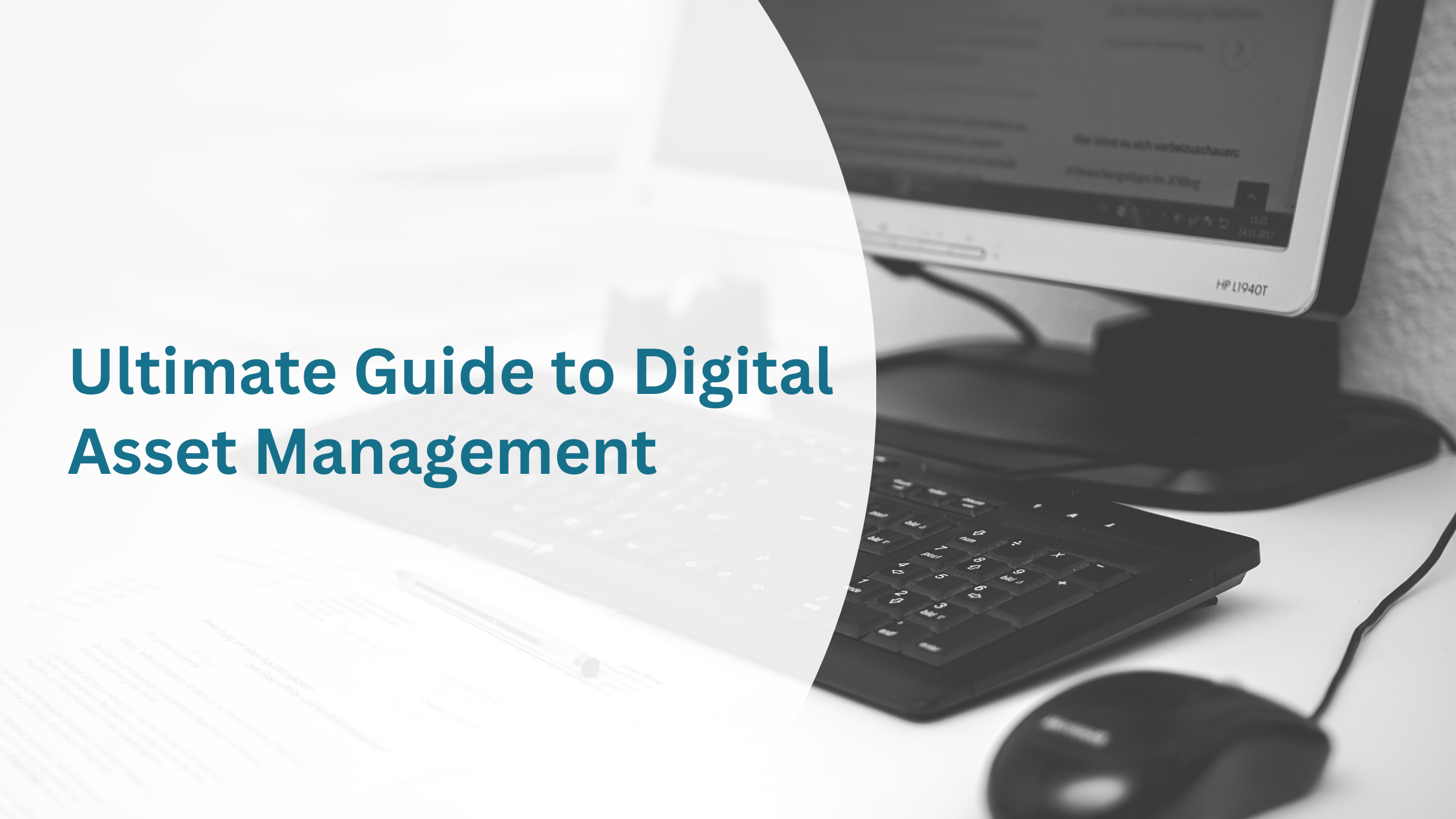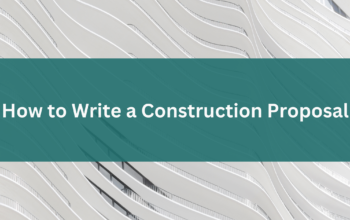AI is changing how AEC marketing teams work—but it’s also raising questions. Can it really write a compelling cover letter? Is it worth the hype, or just another tool that creates more work than it saves? In this AI proposal guide, we’ll cut through the noise. You’ll get answers to the most pressing questions AEC marketers are asking about AI and how it fits into real proposal workflows.
This guide provides actionable, real-world insights from AEC marketing leaders like Rachelle Ray and Eric Liou on harnessing AI effectively, not just hypothetically, to streamline workflows, improve proposal quality, and increase win rates.
Part 1: Demystifying AI for AEC Proposals
What Is Generative AI?
Generative AI, or GenAI, is artificial intelligence that creates original content, like text, images, or audio, based on patterns it learns from existing data. Unlike traditional AI, which follows rules to analyze or predict outcomes, generative AI can produce new outputs in response to prompts.
Examples of GenAI tools include ChatGPT, Google Bard, or DALL·E. These platforms can write a project summary, generate a visual concept, or suggest taglines instantly. They don’t just process data; they help you build on it creatively.
“These days, when AI is mentioned, we’re really talking about generative AI… in the form of large language models, multimodal models, or multi-agent systems.” —Eric Liou, Chief Product Officer, OpenAsset
This opens up powerful possibilities for AEC marketers. Generative AI can help draft project narratives, brainstorm proposal themes, and suggest layout concepts for decks or presentations. It’s like having a fast-thinking assistant that never sleeps.
73% of marketing teams already use generative AI, defining it as a core part of their strategy, and 76% use it for basic content creation, such as draft copy or brainstorming ideas.
Additionally, marketers report an average of more than five hours saved per week thanks to generative AI.
And while AI is not perfect, with the right prompt, it can kickstart your work and save serious time.
(Check out 01:04–02:08)
How Does Generative AI Differ From Traditional AI?
Here’s the simplest way to think about it:
| Traditional AI | Generative AI |
| Analyzes or classifies data | Generates new content |
| Uses structured rules | Uses patterns from unstructured data |
| Predicts outcomes | Creates text, images, code, and more |
| Limited to defined tasks | Adaptable and conversational |
In proposal writing, traditional AI might autofill a form. Generative AI can draft a tailored cover letter.
Think of traditional AI as a data detective and generative AI as the creative partner. And increasingly, they’re being combined: traditional AI analyzes behavior, and generative AI uses that insight to craft tailored proposals.
Core Tools: LLMs, Assistants, Co‑Pilots & Agents
As you build your AI strategy, the key is to use the right tool for the right purpose. The goal isn’t to use AI everywhere, but to let it enhance your process without compromising quality.
Here’s a breakdown of the core tools every AEC marketer should understand:
1. Large Language Models (LLMs)
LLMs like GPT-4 and Gemini are the engines behind generative AI tools. They’re trained on vast amounts of data and can produce human-like responses to prompts, whether you’re asking them to draft a paragraph, summarize a technical document, or translate a client testimonial.
2. Chatbots/Assistants
Chatbots/Assistants are reactive and conversational, responding to direct prompts (“Okay, Google, summarize this report”). They’re ideal for fast, task-specific help like summarizing meeting notes, answering questions, or rewriting sentences on the fly.
3. Co-pilots
Co-pilots are embedded assistants inside your existing tools. Products like Microsoft Copilot work alongside you, offering suggestions without breaking your workflow. They’re designed to speed up common tasks while keeping you in control.
4. Agents
Agents go a step further. They’re autonomous systems that can complete multi-step tasks with little human input. For example, an agent might automatically locate project images, draft email outreach, and package proposal assets. These tools are still emerging in AEC, but their potential is massive for repetitive, time-intensive processes.
Part 2: Reframing AI – From Threat to Trusted Assistant
Is AI Coming for Your Job?
Concerns about AI taking jobs aren’t unfounded, especially in white-collar and entry-level roles. Recent estimates suggest that by 2030, 14% of employees globally may need to change careers due to AI.
In the U.S., entry-level “high-exposure” jobs have seen a 31% drop in online postings since 2022.
Yet, it’s not all doom and gloom. The World Economic Forum projects AI will displace 92 million jobs by 2030 but create 170 million new ones—a net of +78 million globally.
That said, statistics like these show jobs are evolving, not disappearing overnight. Around 19% of workers may have half or more of their tasks impacted by AI, but many more will see partial task augmentation. PwC reports that AI-fluent employees earn 56% higher wages today—a sign that the real opportunity lies in learning to work with AI.
“Think of AI as an Eager Intern”: How to Delegate Wisely
AI isn’t here to take your job—it’s here to take tasks off your plate. That’s why so many AI tools today are branded as assistants, co-pilots, or companions.
“AI is like a very smart, trusty companion… That’s why a lot of products are branded as assistants or co-pilots.” —Eric Liou, Chief Product Officer, OpenAsset
The most effective AEC marketers treat AI like an eager—but—inexperienced intern. It’s fast. It doesn’t get tired. And it can be surprisingly creative. But it still needs direction, supervision, and polish.
Here’s how to delegate to AI without compromising quality:
- Start small and safe: Use AI to draft section headers, outline bios, or write boilerplate intros.
- Give specific instructions: Like a real intern, vague input gets vague output. “Write a 150-word cover letter using our sustainability messaging” is far better than “write a proposal.”
- Refine and review: AI can’t understand nuance or intent. You’ll need to fact-check, rework the tone, and make sure the content reflects your firm’s voice.
Part 3: AI Proposal Use Cases
AI is already solving real problems for AEC marketing teams. Whether you’re stuck staring at a blank page or buried under proposal deadlines, AI can help you move faster, more creatively, and reuse your best content more efficiently.
Here are three high-impact ways AEC marketers are putting AI to work today:
Proposal Ideation and Brainstorming
Every great proposal starts with a strong idea—but getting there isn’t always easy. When you’re juggling multiple deadlines, it’s hard to find the headspace for strategy. That’s where AI can help.
With the right prompt, tools like ChatGPT can surface new angles for win themes, reposition boilerplate content with a fresh tone, or help differentiate your message for a specific client.
Examples:
- “What are five ways to position our firm’s healthcare experience as an advantage in this RFP?”
- “List potential themes we could build around for a civic center project focused on accessibility and sustainability.”
For additional clarity on AI proposal writing best practices, check out our straightforward AI Do’s and Don’ts Checklist.
Drafting Cover Letters with Strategic Prompts
Cover letters can set the tone for your entire proposal, but they’re often rushed or recycled. With AI, you can generate a strong first draft in seconds, then personalize it for the client and opportunity.
The key is in the prompt. A generic prompt will give you a generic letter. However, a strategic prompt can guide the model to include specific differentiators, align with tone, or reflect past work.
Try prompts like:
- “Write a 200-word AEC proposal cover letter for a municipal transportation project. Emphasize our team’s past experience with pedestrian-first design and local partnerships.”
- “Rewrite this cover letter to sound more confident and client-focused. Keep the structure but punch up the opening and closing.”
You still need to edit for voice, accuracy, and compliance, but starting from something instead of nothing is a massive time-saver.
Knowledge Management and Content Retrieval
If you’ve ever spent 30 minutes hunting for a single project description or the latest version of a team bio, you know the pain of poor content organization. AI can dramatically cut down wasted time by helping you find what you need.
“Instead of sifting through vast documents, AI can surface content that would take you minutes or hours to find.” —Eric Liou, Chief Product Officer, OpenAsset
Whether pulling content from a DAM system like OpenAsset or looking through dozens of past proposals, AI can quickly surface the most relevant information based on your prompt or search context.
(Check out 00:26–01:10)
This is especially powerful in deadline-driven environments where time is tight. When AI is trained on your firm’s actual project data, bios, boilerplate, and image libraries, it becomes more than just a search tool.
The result? Less time hunting, more time writing. And improved consistency across every proposal.
Part 4: Where AI Falls Short
For all its strengths, AI isn’t a magic wand, and it isn’t a replacement for subject matter expertise, creative strategy, or deep client knowledge.
One of the biggest mistakes AEC marketers can make is over-relying on AI for the wrong tasks. While it’s great for speeding up early drafts and surfacing past content, there are specific areas where human oversight or full authorship is essential.
When Not to Use AI
AI is a powerful assistant, but it’s not a strategist, a subject matter expert, or a licensed professional. And while it can improve speed and creativity, there are moments in the proposal process when relying on AI can do more harm than good.
Here are the moments where it’s best to keep AI in the passenger seat and let your team take the wheel:
1. Win Themes
Win themes are the backbone of your proposal strategy. They require nuance, differentiation, and alignment with client pain points. This level of insight can’t be generated from a generic prompt or pulled from a model trained on public data.
“Win themes should be hyper personalized… Cover letters should reflect client-specific insights… AI just can’t do that for you.” —Rachelle Ray, Head of AEC Marketing Innovation, OpenAsset
2. Compliance-Heavy Content
Anything that involves legal, safety, or regulatory language—like insurance requirements, certifications, or DBE goals should always be reviewed (or written) by someone qualified. AI is known to “hallucinate” facts and can get critical details wrong.
3. Technical Sections
Engineering specs, scope narratives, and design descriptions are too complex and high-stakes to trust to a model. AI doesn’t know your firm’s methodology, risk profile, or design intent. At best, it might generate boilerplate; at worst, it could introduce costly inaccuracies.
The Rule of Thumb
Use AI to accelerate—not to automate—critical thinking. If the task requires nuance, empathy, judgment, or strategic positioning, it still needs a human in the loop. Think of AI as your starter, not your closer.
Part 5: Tools and Prompts That Deliver
AI tools are only as good as the instructions they’re given, which is why prompts are everything. For AEC marketers, the right prompt can mean the difference between a generic response and a powerful first draft that moves your proposal forward.
Whether you’re using ChatGPT or another LLM-powered system, knowing how to guide the tool is critical.
Here are high-impact prompt types and a real-world example of using AI to develop a strong, strategic cover letter:
High-Impact Prompt Categories for Proposal Teams
Here’s where generative AI shines when paired with smart prompting:
- Win Theme Development: “Read the background below and suggest three possible win themes based on our design-build experience and community engagement focus.”
- Cover Letter Drafting: “Draft a 200-word cover letter for a K–12 education project, highlighting our local experience, team longevity, and stakeholder collaboration.”
- Boilerplate Rewriting: “Rewrite the following firm overview to sound more client-focused and eliminate passive voice.”
- Image Use Justification (via OpenAsset): “Match the following project images with brief descriptions for a proposal on a civic center renovation.”
- Bio Customization: “Adapt this project manager bio to highlight experience with federal contracts and LEED-certified buildings.”
AI-Enhanced Cover Letter Development: A Step-by-Step Example
(Check out 02:20–06:38)
Here’s how to build a better cover letter with AI:
Step 1: Feed the Background
Share the RFP summary, client pain points, and your firm’s differentiators.
Step 2: Generate Win Themes
Ask the AI to suggest win themes based on what it read—don’t draft anything yet.
Step 3: Draft the Letter
Now, use a second prompt to write a cover letter using one or two selected win themes.
Step 4: Edit for Accuracy and Tone
Always review the draft to align with your brand voice, fact-check claims, and tailor it to the specific opportunity.
Part 6: Building Team Confidence in Proposal AI
Despite all the buzz around AI, many AEC marketing teams are still hesitant to dive in—and for good reason. With rising expectations, limited time, and concern over getting it “wrong,” it’s easy to avoid new tools altogether.
But here’s the truth: the best way to build AI confidence is to start small and experiment.
69% of marketers say they’re excited about using AI, but only 35% feel confident using it effectively. That gap can be addressed with guidance, support, and practice.
(Check out 05:36–06:29)
“Just sign up for ChatGPT and start playing…get comfortable with the strengths—and the limitations.” —Eric Liou, Chief Product Officer, OpenAsset
Helping Marketers Get Started Safely
The goal isn’t to master AI overnight. Instead, give your team safe, low-pressure ways to test the waters.
Try these entry points:
- Use ChatGPT to rewrite a LinkedIn post or email draft
- Prompt it to summarize meeting notes or clean up an internal memo
- Create a “sandbox session” where the team experiments together
- Assign an “AI champion” to test tools and share useful prompts
You can also create informal coaching plans or internal guides (like a “Top 10 Prompts for Proposal Teams”) to lower the barrier to entry.
The key is creating a culture where curiosity is encouraged, and mistakes are part of the process. Once marketers experience a few small wins, adoption tends to spread naturally.
Bringing AI Into Your Proposal Workflow
AI won’t replace your expertise, but it can amplify it. When used intentionally, it helps you move faster, write smarter, and focus on what matters most: crafting proposals that win.
At OpenAsset, we’ve built AI directly into the tools AEC marketers already use, making it easier to find the right content, generate polished drafts, and stay consistent across every submission.
Whether you’re brainstorming win themes, writing cover letters, or pulling project data,
OpenAsset’s AI Proposal Tool gives your team the confidence to work smarter, without losing control.
Ready to see how it works?




